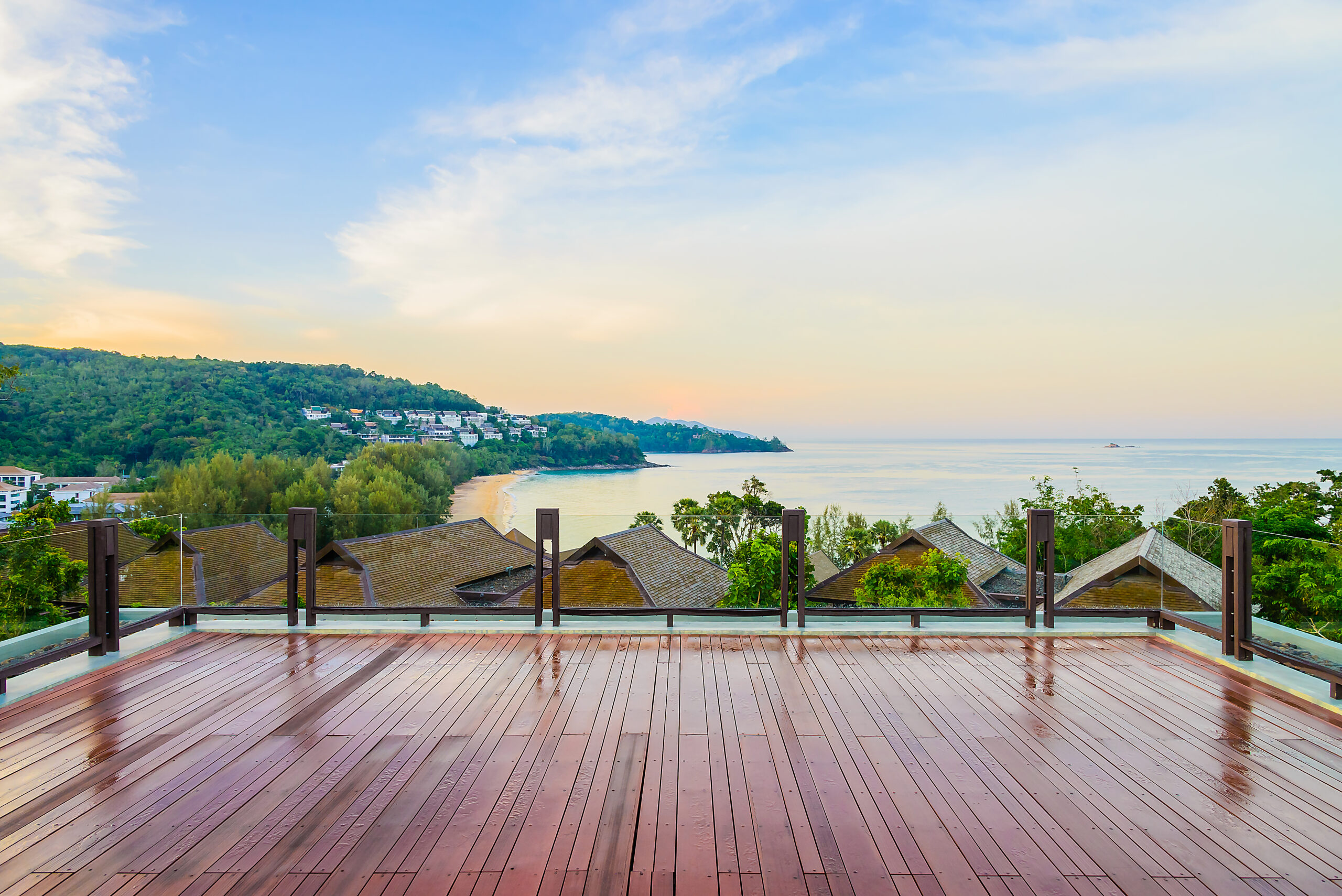

Wood decks offer natural beauty and functional outdoor living space, but exposure to rain, snow, sun, and seasonal changes can quickly wear them down. Cedar, redwood, and pressure-treated wood are popular choices for decks in New York due to their durability and appearance. However, all wood types require proper waterproofing to prevent rot, decay, mold, and warping. In this comprehensive guide, we explore the best waterproofing methods for each wood type, helping homeowners extend the life and aesthetics of their deck.
This article is a subpage of our Deck & Balcony Waterproofing pillar page and is designed to support your waterproofing decisions with expert advice tailored to local NY conditions.
1. Understanding the Wood Types
Cedar: Naturally resistant to decay and insects, cedar is a lightweight and attractive option. It has a tight grain and contains natural oils, but it still requires sealing to resist moisture over time.
Redwood: Redwood has similar properties to cedar, including natural tannins that repel insects and moisture. However, it is more expensive and typically more dimensionally stable. It needs UV protection along with waterproofing.
Pressure-Treated Wood: This is pine wood that has been chemically treated to resist rot and insects. It’s more affordable but more prone to cracking and warping if not sealed properly. Waterproofing is essential to maintain its integrity.
2. Why Waterproofing Matters
All wooden decks in New York face:
- Heavy rain and snow in winter
- High humidity in summer
- Intense UV rays in spring and fall
- Salt exposure in coastal areas
These environmental conditions can:
- Cause boards to swell, shrink, or split
- Lead to fungal growth and algae
- Discolored wood, reducing curb appeal
- Shorten the life of the deck by years
Waterproofing prevents these issues, ensuring your investment lasts longer and remains safe to use.
3. Waterproofing Cedar Decks
Best Time to Waterproof: After 2-3 weeks of installation (allowing natural oils to settle)
Recommended Methods:
- Penetrating Sealers: Use a high-quality oil-based sealer that penetrates deeply without leaving a surface film. This allows the wood to breathe while repelling water.
- Waterproofing Stains: Semi-transparent stains with waterproofing properties add UV protection while maintaining the natural look of cedar.
Steps:
- Clean the deck with a wood-specific cleaner.
- Sand any rough patches lightly.
- Apply the sealer/stain using a brush or sprayer.
- Let dry for 24-48 hours.
Maintenance: Reapply every 1-2 years, depending on foot traffic and exposure.
4. Waterproofing Redwood Decks
Best Time to Waterproof: After a few weeks of drying if newly installed
Recommended Methods:
- UV-Resistant Sealers: Redwood needs strong UV blockers to prevent graying.
- Clear or Tinted Water Repellents: Maintain redwood’s rich color while preventing water infiltration.
Steps:
- Rinse deck with a mild deck wash.
- Sand lightly to remove old finish or debris.
- Apply sealer with a pump sprayer or roller.
- Wipe off any excess product.
Maintenance: Reapply every 1-2 years, depending on foot traffic and exposure.
5. Waterproofing Pressure-Treated Wood Decks
Best Time to Waterproof: Wait 2-6 months after installation to allow chemical treatment to dry out.
Recommended Methods:
- Water Repellent Preservatives: These contain both a fungicide and UV inhibitor.
- Acrylic-Based Sealers: Ideal for resisting water pooling and quick drying.
Steps:
- Use a deck cleaner to remove mill glaze and dirt.
- Let dry completely.
- Apply water repellent using a brush or roller.
- Ensure even coverage, especially in seams and joints.
Best Time to Waterproof: Reapply every 1-2 years.
6. Common Waterproofing Mistakes to Avoid
- Skipping cleaning: Applying sealer on dirty wood traps mildew and debris.
- Overapplying product: Leads to tacky surfaces and poor absorption.
- Not checking moisture level: Wood must be dry for proper sealer penetration (under 15% moisture content).
- Using interior products outdoors: Always use products rated for exterior use.
7. Additional Tips for Long-Lasting Waterproofing
- Inspect Annually: Look for cracks, fading, water absorption.
- Clean Seasonally: Remove leaves, pollen, and debris.
- Use Deck Covers: Overhangs or pergolas can reduce sun damage.
- Mind the Gaps: Ensure proper spacing between boards for drainage.
8. Choosing the Right Waterproofing Product
For Cedar:
- Olympic Maximum Clear Waterproofing Sealant
- Ready Seal Natural Cedar Exterior Stain and Sealer
For Redwood:
- DEFY Extreme Wood Stain
- Thompson’s WaterSeal Waterproofing Stain
For Pressure-Treated Wood:
- Rust-Oleum Wolman Raincoat
- Seal-Once Nano+Poly Wood Sealer
Always check for:
- VOC compliance in NY
- Mildew and UV resistance
- Manufacturer’s recommendations
9. Local Considerations in New York
In NY, decks are exposed to more freeze-thaw cycles than in warmer regions. This expands and contracts the wood, making waterproofing even more essential.
In coastal zones (Long Island, Queens, Brooklyn), saltwater exposure can accelerate decay. Choose marine-grade sealers or those with salt resistance for better results.
10. Professional Waterproofing vs. DIY
DIY Waterproofing:
- Affordable
- Best for small decks
- Requires time, tools, and product knowledge
Professional Waterproofing (like Waterproofing Experts NY):
- Customized treatment for your wood type and location
- Guaranteed coverage and longer lifespan
- Includes inspection and maintenance planning
Hiring professionals ensures your deck remains safe, appealing, and structurally sound.
Conclusion: Protecting Your Investment
Whether your deck is cedar, redwood, or pressure-treated pine, waterproofing is a critical part of maintaining its longevity and appearance. With the right techniques and products, you can protect your outdoor space from moisture, UV rays, and seasonal damage.
Need expert help? Contact Waterproofing Experts NY today for a free consultation or inspection. We’ll help you choose the best waterproofing solution tailored to your deck’s material, location, and usage.
Related Pages: